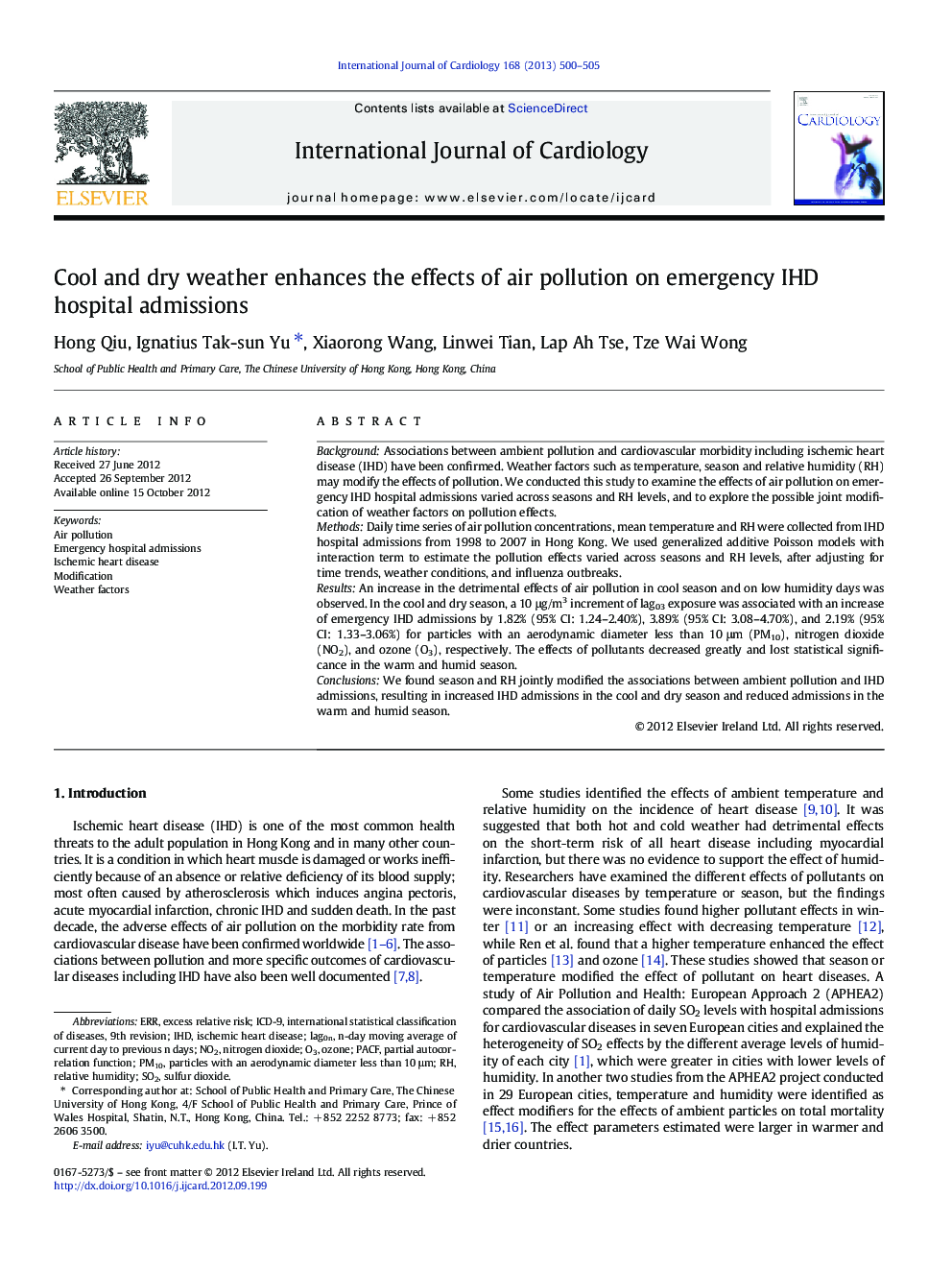| Article ID | Journal | Published Year | Pages | File Type |
|---|---|---|---|---|
| 5976768 | International Journal of Cardiology | 2013 | 6 Pages |
BackgroundAssociations between ambient pollution and cardiovascular morbidity including ischemic heart disease (IHD) have been confirmed. Weather factors such as temperature, season and relative humidity (RH) may modify the effects of pollution. We conducted this study to examine the effects of air pollution on emergency IHD hospital admissions varied across seasons and RH levels, and to explore the possible joint modification of weather factors on pollution effects.MethodsDaily time series of air pollution concentrations, mean temperature and RH were collected from IHD hospital admissions from 1998 to 2007 in Hong Kong. We used generalized additive Poisson models with interaction term to estimate the pollution effects varied across seasons and RH levels, after adjusting for time trends, weather conditions, and influenza outbreaks.ResultsAn increase in the detrimental effects of air pollution in cool season and on low humidity days was observed. In the cool and dry season, a 10 μg/m3 increment of lag03 exposure was associated with an increase of emergency IHD admissions by 1.82% (95% CI: 1.24-2.40%), 3.89% (95% CI: 3.08-4.70%), and 2.19% (95% CI: 1.33-3.06%) for particles with an aerodynamic diameter less than 10 μm (PM10), nitrogen dioxide (NO2), and ozone (O3), respectively. The effects of pollutants decreased greatly and lost statistical significance in the warm and humid season.ConclusionsWe found season and RH jointly modified the associations between ambient pollution and IHD admissions, resulting in increased IHD admissions in the cool and dry season and reduced admissions in the warm and humid season.
